Sadly Missed
Cathy and I are very sad today. We are mourning the passing of a dear friend in comics fandom, brother of Bea Barrio-Buchman and brother-in-law of our friend Ed Buchman (publisher of Little Lulu fanzine, the Hollywood Eclectern): Mickey Barrios. He died last night of complications of pneumonia and a chronic cough he had suffered from for several months. Mickey had a small business for years dealing in new and old comic books at sizable discounts. The business went under the name “BEA”, same name as his sister, but it could have been an abbreviation, Mickey never told us.  He lived in a charming little attic, surrounded by books, in Bea’s family’s house and was a very quiet and private person. Comics were his window on the world and, through them, he made a lot of friends. He knew many folks in fandom; knew all the dealers at the San Diego Comic-Con. I still prize a book I bought from him on cartoons: “Careers in Cartooning” by Lawrence Lariar. Mickey was a big booster of my wife’s comic book: Mad Raccoons by Cathy Hill (published by Mu Press, 1991-1996). He wrote Cathy encouraging letters when a new issue came out, calling it a “truly adult” comic, about relationships, psychoses and neuroses. He was very generous with his time, and always carried Mad Raccoons in his monthly comic lists. Cathy always said that Mickey’s comments about her raccoons were some of the most astute she ever received and valued them. This is an especially sad time for Mickey’s sister, Bea, as her mother passed away shortly before the holidays last year. If you knew Mickey, or would like to write a letter, just go to Ed Buchman’s website (there is a link to it on this page).
I have posted almost a week’s worth of Marvelous Mike strips: 3/12/1956 to 3/16. This is to bring the strip up to posting a week at a time as originally published. Also there is a scan of the first Mike strip, kindly supplied by Dean Mullaney (through Craig Hodgkins, who has a blog on Joe Penner, link at right). Dean thinks there was a Mike Sunday page, maybe he will send us one? Also I have posted the first two pages of the Jim Tyer Felix story: “Fair Weather Enemies” from Dell Felix #3. These are real scans, this time. I kind of like to think that Mickey Barrio would have enjoyed reading these. This post is for him. See you next time.
More Mike! San Pascual Stables! Tytla and Tyer!

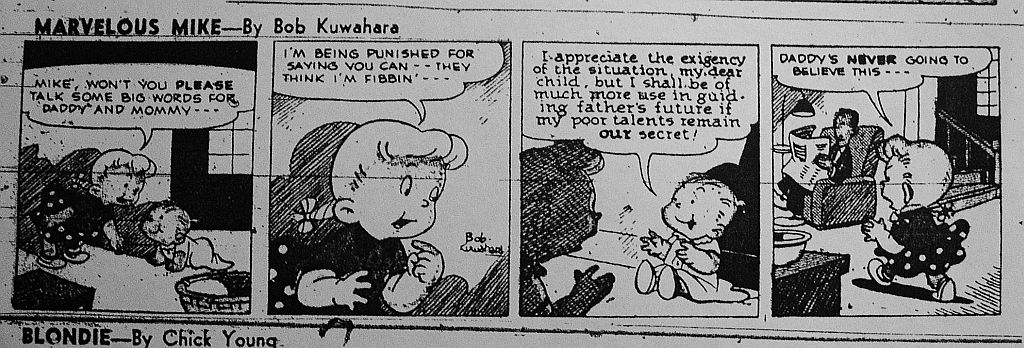

 Here are the last two pages of the Tyer story from Felix the Cat #2, and the next three strips in the Marvelous Mike saga. Note how in the last page and the last panel of the Felix story, Felix’s dialog has been re-lettered. Maybe his original comment was too ribald!  In episode #4, Mike first displays his precocity with a quotation from Shakespeare. His sister Merrie is the only one in the family who knows Mike’s secret at this point. Bob Kuwahara did another comic strip in the late 1940s; “Barker Bill”, featuring the Terrytoons host from early television days who made his screen debut in “Happy Circus Days” (1942). I don’t have much information about the “Barker Bill” strip, I might be able to dig up an example one of these days. Next time we should be getting some better quality scans on the Felix comics.
   Cathy and I painted a beautiful old barn and some of the horses stabled there last Thursday. It was a beautiful day at the San Pascual stables in South Pasadena, after cold and wet weather discouraged outdoor painting the last couple of weeks. Southern California is really horse country. There are a lot of dedicated riders and owners who maintain stables in all sorts of out of the way places. We found another stable just a few blocks from the San Pascual that had a lot of free-range chickens running all over it! At the San Pascual stables there were some beautiful girls riding English, complete with habit and saddles, and still more girls exercising thoroughbreds and sorrels right next to the barn where we were painting. Cathy got a good start on an oil of the barn with two horses in front of it. I did a watercolor which our guest crit master, Lynn Fearman, called “animated”! She said this without knowing I did the painting! I did a study of Lynn and another painter standing in front of the barn with a couple of horses peeking out. I also attempted another study of a little clothesline with the sun streaming through the wash, I didn’t get it on the first try, but it’s such a beautiful subject I might try it again.
      I’ve been watching a lot of color Terrytoons lately. I like the fact that grand opera had such a big influence on the story structure of the Terrytoons, almost from the beginning of the Audio Cinema days. Paul Terry or maybe John Foster must have been opera fans. The singing in some of the Mighty Mouse cartoons is pretty good and fun to listen to, the music in Carmen’s Veranda, for instance, is certainly nothing to be ashamed of. I wonder if Phil Scheib did all the arranging and composing for the choral parts, or if he got help from a friend at the Met. There is something touching about the little jockey’s song, “You Look Pale and Worried…” as he sings to the Colonel’s daughter in My Old Kentucky Home (1946). The operetta form almost stands in for personality (but not quite). Mighty Mouse eventually developed into a remake of the “Fanny” cartoons from 1933 (The Banker’s Daughter), with Oil Can Harry re-designed as a cat, and Pearl Pureheart and Mighty taking over the roles of Fanny and Strongheart.
It’s interesting to see how highly polished the studio’s animation looked when Bill Tytla was working there (1944), and how raggy and unkempt the animation became by 1949, when Jim Tyer’s animation was starting to bloom. Tytla not only animated the famous “cat becomes Mr. Hyde” sequence in Mighty Mouse Meets Jeckyll and Hyde Cat, but also many of the singing hippo shots in Carmen’s Veranda, along with a few scenes of Carmen the girl cat herself. I think Tytla also did some of the great dance animation in the Gandy Goose cartoon, Aladdin’s Lamp (1943), with Sourpuss and the little Chinese cat. Jerry Beck posted part of A Wolf’s Tale a few weeks ago, and that also features Tytla doing the wolf skipping through the forest. This cartoon re-uses some of George Gordon’s animation from The Wolf’s Side of the Story (1938).
   Mike Barrier often compares the Tom and Jerry cartoons with the Terrytoons. I saw a Dingbat cartoon, All This and Rabbit Stew (1950), which uses the same bees in the mouth gag from the Tom and Jerry Tee For Two (1945). The Dingbat (a crazy little bird) sets a whole hive of bees on two hapless buzzards; one buzzard hides in a lake to escape the bees and breathes through a reed. The Dingbat makes like Jerry the mouse and chunks a funnel in the end of the buzzard’s reed above the water line. The bees then fly into the funnel just like in the Tom and Jerry, except they are animated by Tyer in an almost abstract fashion. Unlike Tee For Two, there is no dramatic pause before the bees start stinging. Instead the next scene is a helicopter shot of the lake. The buzzard animated by Tyer, bursts out of the water and gives out with a series of screams animated in staggered timing coming closer and closer to the camera; so crazy that it almost doesn’t scan! Tyer was kinder to his buzzard than Ken Muse was to Tom, there are no bees actually in the buzzard’s mouth, they just sort of radiate out of the buzzard’s body like so many insect shaped sweat drops. The results are not as funny as Tee For Two, but entertaining in a loopy, lopsided way.
Looking at Tyer’s animation frame by frame from some of these Terrytoons is often jaw-droppingly startling (and funny). There is another Dingbat cartoon, Sour Grapes (1950) with the most primitive child-like drawings of the Dingbat doing a laugh, then going into a take at the fox who is just above him. Tyer couldn’t draw the Dingbat’s beak from the front, and apparently had no idea how his bill joined on to his head, but the animation works anyway! In Tyer’s world, the drawings are just way stations in the action stream, it’s what happens between the frame changes that’s magic. In Cat Happy (1950), a Little Roquefort cartoon, Percy the cat’s happy takes when he’s high on catnip are just abstract pinwheels when looked at a drawing at a time. Percy’s head and body literally become just a pinwheel shape before turning back into the cat. At speed this reads as just an accent, all on ones, of course. He uses the same device with Roquefort doing a series of amazed takes at Percy as the mouse floats in mid air, becoming an abstract pinwheel before each of his poses. When you see the tendency toward abstraction in Tyer’s work, and how incapable he was of drawing characters from certain angles, it’s no wonder that Gene Deitch’s design theories were such a natural fit for his brand of cartooning. Terrytoons certainly didn’t create too many vivid characters, but it can be fun to watch them for the animation tricks on display. It’s interesting that at Terrytoons, an incredible draftsman like Bill Tytla and an abstract expressionist like Tyer are equals. Given no real personalities to work with, Tytla and Tyer trade on their skills at making action interesting to look at, Tytla with his careful control of volumes (Carmen and the wolf) and realistic handling of weight (that hippo woman), and Tyer with his complete abscense of volume and completely funny drawings (Dingbat and Percy). They both entertain.
Marvelous Mike!
Thanks to some new software that lets me process pictures more efficiently, here is my favorite comic strip from the St. Louis Post-Dispatch: Marvelous Mike! Written and drawn by Bob Kuwahara; the first episode ran in the Post, March 5, 1956. Here are the first three dailies from Post-Dispatch microfilm. Keep in mind that the Post was one of the few papers in the 1950s that ran their daily comics in color. The downside of that is that the colors, especially red, read as almost solid black on the microfilm. That, and the usual lateral scratches on the film, will mar this reprint, but given the strip’s rarity, I thought it was worth a shot. Mike was an orphan, left on the family’s doorstep in the first episode;in the third strip, Dad inadvertently names the baby: “..for the love of MIKE!” Wife: “That’s it dear, Mike!” Mr. Kuwahara was at the Disney studio in 1932 and may have been involved in the early development of “Baby Weems”.Mr. Kuwahara was involved in Snow White story meetings. There is quite a resemblance between Mike and Weems, as subsequent episodes will reveal.
I was eight when Mike appeared in the Post, evidently the ONLY paper in the USA which carried the strip. If you look at Mr. Kuwahara’s bio above, he created a strip named “Miki” which ran from 1945-1950. Perhaps “Marvelous Mike” is a re-worked version of “Miki”, translated from the Japanese? I notice a strong stylistic resemblance between the drawing in “Mike” and the Gandy Goose and Sourpuss comics of the St. John/Pines era, maybe Mr. Kuwahara drew those as well. There is so much I don’t know about Mr. Kuwahara, he was in an internment camp during WW II, and created Hashimoto-San for CBS Terrytoons in the early 1960s. Sources disagree about when he passed on, some say 1964, others 1966. He must be one of the first Japanese immigrants to do a US comic strip, and work in the pioneering days of sound motion picture cartooning. “Marvelous Mike” appealed to my sense of fantasy very strongly at eight years of age. The adventures of a genius baby must have been my fundamental power fantasy, after all, Mike was smarter than his “father”, and I longed to be smarter than my dad! Perhaps Mike came from another planet, the strip doesn’t reveal that. I loved this comic strip so much, that I clipped it out of the Postand lovingly saved it in a special box. I wanted to share my run of the strip with fellow classmates, so I foolishly took the box to school. It was stolen from me when I wasn’t looking, and I never found out who took it, and never got it back. Now all these years later, my brother in St. Louis is slowly and carefully copying a run of “Marvelous Mike” from St. Louis Post-Dispatch microfilm. Thanks, pal, for all you do, we all owe you one. Bear with me on the first six strips, as I copied these myself a long time ago. My brother’s copies are much better and larger. More Tyer Felix is in store, as well, from better scans. Happy New Year to all the world!
Experimental Post (Pay No Attention)
Happy New Year everyone! This is an experimental post, I am learning new ways to save images on the computer and wanted to see if they make a difference in the loading speed of this page. The ad with the baby is a teaser for the strip starting here next week. We bid a sad farewell to Lane Allen’s Diary, since this is the last strip I could save back in 1958. Lane ran in a magazine that our church took but then suddenly cancelled. Does ANYONE know where this strip might have continued it’s run or what magazine carried it? I’d love to read what happened to Bouncer.
Merry Christmas!
Deck them halls with books of comics! Cathy and I painted last week at the home of Brenda Swenson, famous watercolorist and author of a Walter Foster book, in South Pasadena. Although rain threatened, none fell. About 30 painters showed up to do studies of the old neighborhood houses and the South Pas. water tower. Brenda has a small collection of antique truck bodies in her back yard that proved to be cooperative painting subjects! She served great bowls of steaming bishop, plum pudding, hog jowls, chitlin’s and chestnuts! (I’m only serious.) I prefer hot Tom n’ Jerry, but it’s scarce in these parts. Cathy did a charming oil of Brenda’s front porch with wreath and poinsettia plant, I did the neighbor’s house with dark bougainvillea in the foreground. The light was very touch and go due to the shifting cloud cover. Have a peaceful and joyous Holiday season, everyone! By the way, there’s only one more episode of Lane Allen’s Diary, then maybe someone will step up with more of them!
La Casita Del Arroyo
Here’s a milestone, the end of our first Tyer Felix story from 1962, “Beaux and Arrows”and the start of the next one: “You Must Have Been A Beautiful Baby”. Also the next exciting episode of Lane Allen’s Diary—an evil hunter has designs on Bouncer the deer.
Cathy and I joined our painting group last week to do studies of “La Casita del Arroyo” over along the lower Arroyo Seco, a tributary of the Los Angeles river that runs through Pasadena. The Arroyo is a beautiful canyon, and the little house (“casita”) where we set up our easels is right at the edge. The Casita was built as a public meeting spot in 1933 by the famous architect Myron Hunt, using all natural building materials from the Arroyo. We mainly painted the lovely arches and delicate structure of the Colorado Street Bridge, which we could see plainly from the house’s veranda. Sometimes known as “suicide bridge”, it was built in 1913 in the Beaux Arts style and was named “suicide” for the large number of jumpers in the early years of the twentieth century. After a barrier was placed along the top of the bridge, there were fewer jumpers, but the name stuck. It has been painted hundreds of times, and we’ve done it a few times ourselves, but every time we come back, something new presents itself. This time it was the fall colors of the sycamore and oak trees that fill the canyon’s gulley, 1400 feet below the bridge. Most of the year the trees are relentlessly green; their fall foliage gave us an excuse to break out a bit of red and orange-yellow. The bridge has large arched spans that act as frames for the Freeway 134 bridge just behind it. Mount Wilson is in turn framed by the arches of the 134 bridge, so it is almost like painting an “infinity” comic book cover. Afterwards, we had our usual critique, our friend Walter McNall actually liked my painting, only criticizing my dark trees in the foreground as being too similar to each other. Inside La Casita all the time we were painting and being criticized, a Holiday luncheon was going on. A whole lot of revelers were inside eating lasanga, wearing cloth reindeer antlers on their heads. All the centerpieces had figures of moose, reindeer or elk; perhaps the meat in the lasanga was venison!
Movies I have seen recently include “Knocked Up” (grossed me out), “The Assassination Of Jessie James” (beautiful graphics and photography, but the story was confusing and the characters numerous and non-differentiated) and “No Country For Old Men” featuring Javier Bardem as Anton Chigurh. “No Country” is the Coen brothers latest film, and has a lot of horror and blood, a little comedy and some surprisingly sensitive writing. Tommy Lee Jones plays Sheriff Ed Bell, one of three generations of Texas lawmen. Anton Chigurh is really “the meanest villain in villainville” here, killing folks right and left with his little air gun. Chigurh knocks off Llewelyn Moss (Josh Brolin), the film’s most sympathetic character, about three quarters of the way through. The rationale given for Chigurh’s killing spree is a drug deal gone bad, with millions in cash taken from the crime scene by Llewelyn Moss, who happens on the money by accident. Every time Chigurh turns up in the film, you feel a chill. Javier Bardem (“Before Night Falls”, Oscar nominee) is the outstanding player here, he is a psycho killer, exuding an almost ghostly presence in his uncanny ability to appear at odd times in the story. The Coen brothers work against the expectations of the audience, Chigurh does not get killed violently as payment for his crimes, but is badly injured in a car collision near the film’s end. Chigurh just walks away from the scene of the accident. Tommy Lee Jones as Ed Bell relates a dream he had about his father and fire to end the film. The story could be interpreted as a parable about the Iraq war, or the arbitrariness of corporate America: sometimes Chigurh just kills without warning, sometimes he gives his victims a chance with a coin toss, like some CEOs and Presidents we have known. New Mexico stands in for Texas through most of the action, although a few scenes were shot in the real Texas and Mexico. I could follow the story without difficulty, and I liked/hated the villain especially, see it!
I hope to post again just before Christmas, but if I don’t, have a great Holiday, whichever one you celebrate! See you soon.
Olvera Street
Here are the next two Tyer Felix pages and the next installment of Lane Allen’s Diary. I hope maybe Allan Holtz will be able to shed some light on this feature, we know it ran in 1957, but which magazine? How long did it run? I would love to read more than I have managed to collect.
Last Thursday, the painting group, Cathy and I went to Olvera Street in downtown Los Angeles to paint the historic landmark and the bustling shops and milling tourists. The oldest surviving house built in L.A. is still there, and many other historic buildings. Cathy and I always walk over to the old train station, Union Station, which is across the street. I love the abandoned restaurant inside the Station with the checkerboard floor and old counter with the art deco stools. Maybe they rent this one out from time to time. I hope people can get inside the restaurant, it’s too big a space to just let sit there. Of course there are two newer eateries inside the station, TRAXX, which is the “sit down” restaurant, and the “Bagel Express” right across from it. The big brown overstuffed chairs have been used by passengers between trains for many years and would make great painting subjects in themselves. Christmas decorations reflected in the well-polished floors, invite the visitor to gaze at their welcoming splendor. It’s heartening that in this age of air travel, that the age of rails still has such a show-place.
Cathy and I painted the entrance to Olvera Street, right next to the bandstand. There was a big stuffed replica of a donkey which attracted the hordes of school kids that got off the buses to take their “Old Los Angeles” day trips. Old drunks offered to pay us $40.00 to paint their portraits, but we ignored them, they were obviously not in any mood to sit long enough for a portrait, let alone pay for it with their liquor money! This time of year they also have the traditional Mexican Christmas procession: “Las Posadas”. If you want to learn more about it, just thread your print of “The Three Caballeros” up and hear Panchito tell you all about it.
Today, Sunday, we went to the San Gabriel Art Association in the Old Grapevine room and watched the great Jason Situ paint a forest landscape. He worked from a photograph and just in a little over an hour worked out all his darks and lights, using his favorite color, Prussian Blue and Cadmium Red for the darkest tree trunks. He added a lot to the composition, making it appear that a little stream was coursing over a natural dam in the foreground. Jason is not only a master of foliage and plants, but can paint water very convincingly, like Josh Meador used to do. A lot of our friends from the Painting group came to the demo and really enjoyed it. This was only the second time that Jason has painted before the public, so it was not to be missed.
Movie seen this week: “Starting Out In The Evening”, very good, felt like a filmed stageplay with a great performance by Frank Langella as the old writer. Another rare attempt at doing a movie which touches on the creative process. It’s also quite erotic without much nudity, as a matter of fact, the only “nude scene” is in a very non-erotic part of the story. See it if you don’t have to spend too much money. Also saw “Grace Is Gone”, good, anti Iraq war picture, emotional, but restrained. Music score by Clint Eastwood! I liked it, but not as much as “Starting Out In The Evening”.
Castle Green
Well here’s the next two pages of Tyer’s Felix story and the next episode of Lane Allen in which the beloved deer jumps into the underbrush. Pussyfoot’s crafty expression in the last panel on the second page reminds me of Sweet Tooth Sam the candy bandit in Tom Terrific. Tyer probably animated that scene of Sam.
Last Thursday, Cathy, the painting group and me all went to the Green Hotel in Pasadena, now called the “Castle Green”. It’s a hotel that dates back to the 1910s, it’s now been turned into a condominium. The rooms inside are all period furnished and have that “Grand Ecole” kind of look. We all congregated in the park across the street from the Castle. It was fun painting the two towers of the southern side of the building, surrounded by the many tall palms surrounding it. As we painted, two unfinished Rose Parade floats drove right down the street! It was weird to see how BIG the floats are, you don’t get that on TV, and how simple the underlying construction looks before all the flowers are applied to the float. One was obviously Glendale’s entry, it looked like the old tower of the Glendale airport, which is now full of Dreamworks and Disney buildings. There was an old Piper Cub taking off in front of the tower. The other float was a giant Indian Chief, looking something like an outsized Pontiac hood ornament. It was a wonderful experience painting the old hotel, and we got many enthusiastic comments from passing pedestrians. People are nice when not speeding past you in their cars! We’re hoping to paint in a really colorful spot this Thursday, I’ll report on it if it actually happens.
If you want to read my account of the KTLA (Los Angeles) 60th anniversary marathon over Thanksgiving weekend, here it is:Â
“I watched quite a lot of the KTLA 60th over the weekend. The presentation, especially of the 1940s and 50s material, looked OK, but was NOT respectful. The whole pace of television has changed radically since the “golden age”. In those days, the average half-hour show had 26 minutes of programming, now it’s 21, 9 minutes of commercials. In order to squeeze in those spots, KTLA radically edited and shortened most of the black and white programs. The Peter Gunns were so chopped up that they put in a lot of fake cross-dissolves and wipes to cover up the “slow spots” in the program. To me, that’s the ESSENCE of 50s TV, it was in no particular hurry, the directors took their time and held on shots and usually did slow transitions and long fade outs. This, admittedly, made the shows cheaper to produce, but without those transitions and longer shots, a lot of the charm of the old shows is missing. It was a great pleasure to see the Tommy Rettig version of LASSIE, I hadn’t seen those since the original airings, the Jon Provost LASSIEs have dominated TV slots since the 1960s. The Rettig LASSIES had a lot slower pace, but they radiate charm and innocence that’s missing in the Provosts. The POPEYE hour sadly didn’t include Tom Hatten, KTLA’s Popeye host for many years. They aired without fanfare) rather faded prints of GYM JAM, TOTS OF FUN, HOSPITALIKY (COLORIZED VERSION!), POPEYE AND THE PIRATES (STILL CENSORED), A BALMY SWAMI, QUICK ON THE VIGOR and SPREE LUNCH. The OUR GANG comedies they ran were just two: BEGINNERS LUCK (colorized) and TEACHER’S PET. They ran them with so many commercials that only ONE comedy could be shown in half an hour. The THREE STOOGES were treated with more respect, they ran three shorts in an hour: HOI POLLOI, A-PLUMBING WE WILL GO and MEN IN BLACK (with an artificial wipe in it to edit it down). The TIME FOR BEANY half-hour was the most disappointing for me, they ran episodes #281 and #421 (originally 15 minute episodes) from the DVD set. They were the same edits as in the DVD, except the audio in episode #281 was cleaned-up a bit more. But these great shows air so seldom on television, that you have to be grateful for even THAT small favor (at 4:30 AM). TIME FOR BEANY may be KTLA’S greatest show of all time, yet it’s shoved on the air at that un-godly hour, with no preamble or interviews to support it. The show’s treatment in previous KTLA anniversary programs was more respectful to say the least, but they only showed clips, at least here, they ran almost the entire programs. Let’s hope we don’t have to wait 10 more years to see TIME FOR BEANY again on LA TV. “The Traffic Zone” episodes of Hoppity Hooper were fun to listen to, they included a few Fractured Fairy Tales and Peabody’s Improbable History with them. “Underdog” doesn’t hold up as well, the prints they ran (including Tennessee Tuxedo) were pretty faded. It’s going to be a whole lot more fun watching the shows I taped from this Melee Massacree, at least I can fast-forward through all those commercials! If I ever saw “Larry” from the “Sit and Sleep” stores ads in a crosswalk( “Your mattress is FREEEEE!”), and I was driving, well, it might almost be worth the million-dollar fine and prison sentence to be rid of him! I might as well nail Irwin, Larry’s sidekick, (YOU’RE KILLING ME LARRY!), if I can find HIM in another crosswalk.”
Here’s a comment I made in response to another poster: “I can report that the image quality of the TIME FOR BEANY episodes was very good, just like the copies on the “Beany and Cecil” DVD of a few years ago. They were probably the same transfers, except the audio on episode #281 was cleaned up a bit from the DVD release. You are right about the KTLA kines being on 35mm. The Clampett family has a vault full of the 35mm episodes. I hope they are taking good care of them. How I would LOVE to have all the Bob Clampett puppet shows on DVD (sigh)! I just hope the prints are not going vinegar or suffering nitrate deterioration. I guess what keeps these from being transferred to DVD is that they probably wouldn’t sell in the millions. Also music clearance can be a problem.You have to meet these shows more than half-way when you watch them. Being a cartoon fan, I have no trouble entering into low-tech fantasy worlds, and I love Beany and especially Cecil’s world. Years ago in the Clampett library I saw a 16mm print of a prime-time Willie the Wolf show (KTTV) which had Spike Jones as the guest star with his pet kangaroo in tow. Bob C. had puppets interviewing live guests many years before the Muppet Show. As long as I’m wishin’ how about a DVD collection of the early Bil Baird marionette shows such as THE WHISTLING WIZARD or LIFE WITH SNARKY PARKER, directed by Yul Brynner! I watched the two HOPALONG CASSIDY eps. this morning, and they were shortened just like most of the other b/w shows KTLA ran. It was great to see old “Uncle Joe” Edgar Buchanan in the sidekick part, I think just about all the Hoppy TV eps. are out on DVD.”Â
 I think I enjoyed that old Lassie episode with Tommy Rettig as much or more than anything they ran that weekend.
Turkey
Hi Y’all! Hope you had a great Thanksgiving! Cathy and I just stuck around home this year and made up a feast out of turkey parts, (breast and tails) baked yams, green beans, stuffing and pineapple pie for dessert. We saw two new movies: Into The Wild and American Gangster. Into The Wild is very good, a haunting story that is hard to stop thinking about, even though I am not crazy about the ending. American Gangster had a lot of potential, but I wanted the two stars, Denzel Washington and Russell Crowe to meet much earlier in the film than they actually do. As a result, the story seems to drift and mark time until the fated meeting comes up and when that happens, the film only runs 15 more minutes! Imagine if you had two lead actors under contract to be in your movie, would you have them on parallel tracks for over two hours? I don’t think you would, the temptation to have them meet would be too great.
Are you looking at Allan Holtz’s Stripper’s Guide blog every Saturday? There is a link to his site on the right side of this page. He reprints a lot of rare George Herriman editorial cartoons from 1906, San Francisco Examiner I believe. This should give you a good dose of Garge until Krazy Kat returns some day.
Are Ya Tyer-ed Yet?
Here are the next two pages of “Beaux and Arrows” from Jim Tyer in 1963, and the next episode of “Lane Allen’s Diary”. I don’t know if Tyer wrote these stories as well as drawing them, maybe Mark Evanier would know. Cathy and I got some painting in on Thursday morning at the Pasadena Tournament of Roses headquarters. They occupy the former Wrigley mansion over on Orange Grove. It’s certainly impressive what a fortune Wrigley made out of chewing gum! We enjoyed painting the mansion in the morning light, it was 80 degrees! About 32 painters were there, including master painter, Jason Situ, and our leader Walter McNall. Walter used to work for Mrs. Wrigley when he was a teenager, cutting palm fronds off the trees. He learned to shinny up palms when he was stationed in the South Pacific during World War 2. Unfortunately, Walter lost his job when he made Mrs. Wrigley nervous with his death defying antics. He also told me a story on Eisenhower. It seems that the bathroom on the first floor of the mansion is called the “Eisenhower Bathroom”. Ike was supposed to be Grand Marshal of a Rose Parade (1950s?) and they were holding up the parade while Ike visited the “facilities” in the Wrigley mansion. Well, a long time went by and Eisenhower didn’t emerge. Finally, a frantic knock on the door and hurry up call revealed that Eisenhower couldn’t get out of the bathroom. He locked himself in! Of course, Ike was finally released in time to assume his seat on the float.
At the critique, Â Walter chastised me for making my palm fronds too detailed, with too many small brush strokes. It’s always a juggling act to do a good watercolor, between drawing, light and shadow and composition, it’s easy to get too caught up in the details. Cathy did much better with her oil of the mansion, doing her shadows in lavender hues and the light parts of the building in a light gamboge/ochre. I don’t know what we will do for Turkey day, but I hope all you dear readers have a great Thanksgiving! Enjoy these comics and we’ll see you soon.
New Comics!
Hi Folks. Well, in the absence of Krazy, Felix (drawn by Jim Tyer) will take his place for awhile. Here (in reverse order) are the first two pages of “Beaux and Arrows” from Felix The Cat No. 2 Jan.-Mar. 1963, published by Dell. This story was requested by Milton Knight. Felix and Kitty are wonderful, but Pussyfoot seems to have fired Tyer’s imagination. It’s a treat to see all the crafty and malevolent expressions with which JT has endowed his villain. I’ll be reprinting more pages from this story over the next few weeks, along with the next episodes of “Lane Allen’s Diary”. Of course, you know the drill, just click on the images to enlarge them. The Felix pages are small files, so you may have to click twice to get them to display at the best viewing size.
I’ve also uploaded another snapshot from our trip to Mexico, this one of Acapulco. I like the contrast of the poor fishermen with the giant hotels and housing developments in the background. The fishermen of Acapulco don’t seem to use rods, but stand hip-deep in ocean water and cast their lines from reels that they carry in their hands. They cast like a cowboy, looping the fishing line over their heads like a lasso. They seem to catch plenty of fish with this method, as we saw a large pile of fish for sale along the boardwalk. I’ll try to scan some of our watercolors so that you may see what we painted in the next few posts. I did a little more animation on “There Must Be Some Other Cat” this week, doing a 10 second opening tag for the picture with “The Cat” listening to a Victrola. I sent the test to my producer, so we’ll see if he likes it or not. Hi Greg, are ya listenin’?
Hola, Amigos!
Como Esta Usted? Cathy and I are back from our painting trip. We went on the Norwegian Star cruise ship to the Mexican riviera! The McNalls, a couple we paint with every week, talked us into coming with them to the coastal towns of Mexico, including Acapulco, Zihuatenajo/Ixtapa, Puerto Vallarta and Cabo San Lucas. What a great trip, the food on board the ship was never ending, you could eat at all hours of the day and night, breakfast being especially good. All the ports were a fascinating combination of old and new. Such as Zihuatenajo, which combined an old Mexican fishing village (with Yamaha outboard motors) right next to Ixtapa, a vast area of sandy beaches that looks like a parking lot for giant hotels. That’s a photo of my wife, Cathy, standing next to the water in Zihuatenajo. We painted the old church there from a cafe. For the price of a cerveza (don’t drink the water), the owner let us sit there for a couple of hours and paint watercolors. We worked entirely in watercolor this trip, as oils have a bit of a hard time travelling. Our friend Walter McNall even gave us all an art lesson one morning on how to indicate figures in a landscape, by just painting simple shapes, he calls them his “carrot people”. He paints a carrot shape for the shoulders and body, then adds a small dot for a head afterwards. We also devised shapes to represent horses, dogs and cats. On the way to Acapulco, we were standing near the pool on deck 12, when the ship lurched and started to tip to the port side. About 4 feet of water from the pool started to pour down the deck, frightening the girls and knocking several men down. Then the boat tipped to starboard and I found out that my shoes were waterproof. The water seeped into the ship’s elevators, light fixtures and soaked the carpet for at least 4 decks below us! A lot of speculation as to what happened was put to rest when the Captain came onto the PA and quietly explained that he had to stop the ship because he “didn’t want to hurt a humpbacked whale” that was in our path. I resisted the urge to send the Cap. a cartoon of him wearing a T-shirt that said: “I brake for whales”. We found ourselves painting mostly churches on this trip, but in Cabo San Lucas, Cathy did a study of Sammy Hagar’s famous club, the Cabo Wabo. We also took a glass-bottom boat out to “Los Arcos”, the famous rocks, featuring an arched formation that looks like a big window. There were many fish swarming about that the Captain fed. We could see their colorful scales through the glass bottom. The boat sailed very close to some seals basking on the rocks that looked like big brown burritos. We painted some watercolors of the rocks later from the Norwegian Star’s deck. We had a balcony off our stateroom that was a good place to paint from as well. In Puerto Vallarta, we found the statue of John Huston that the citizens put there to commemorate the filming of “The Night of the Iguana”. Elizabeth Taylor still has a house in Puerto, but we couldn’t get too near it. The park that the statue of Huston is in is a narrow little strip of island right in the center of town. We also found a friendly little tabby cat on the island with very sleek fur who meowed (I swear) with a Mexican accent! Of course, perros and gatos are not permitted there, but cats don’t believe in signs. It was a great eight days, filled with painting, fellowship and fun. The stewards and the people were all as nice as could be. We met one very amusing lady from Chicago who was filling a photo album with pictures of all the “fat ladies” she saw on board. Maybe fat women are rare in Chicago. She certainly had a bumper crop of heavies to snap, some of them so portly that they had to get around in motorized chairs. They must have loved the never ending buffets!
These will be the last Krazy strips I will be reprinting for awhile, as we have reached the end of 1938, and I don’t have 1939 yet. When I get more, you will see them here. Lane Allan will saunter forth for awhile yet. I am working on getting another strip for this blog, may or may not be cat related. I have been doing several things DVD related, but I’d better not talk about them, I might get quoted! See ya next time.
No Pitch This Week, You Can Come Out Now
Hi Folks, I’m not trying to “cel” anything this week. Here are the next 6 KKs from 12-19-1938 to 12-24. This week “Pop” is the centerpiece of all the gags. There is a radio reference in 12-24 to the “Vox Pop” NBC sidewalk interview show of 1938-39. That’s why the old dog is named “Voxx”. Here also is the next ep. of Lane Allen’s Diary: Lane finds out he’s been followed by a mounted forest ranger, of course the girls all make fun of him for being scared. Expressions are good.
Posts will be scarce around here for a couple of weeks, Cathy and I are going on a painting trip. I won’t tell you the details until we return, but suffice to say, it’s something brand new for us and we are somewhat trepidatious. Wish us luck and the good Lord willing, I’ll be posting at ya again real soon.
Keep On Pitchin’ and Crestline, Ca.
Here is another cel from “It’s ‘The Cat'” for your gift-giving consideration. This image of the cat’s shadow about to jump to the top of the fence has beautiful night-time colors (not very well represented in my photo), and is 12 field in size. It’s $100.00 including the original drawing that it was traced from, hand-inked of course. I will have some more images of cels for sale next week.
In the comics, we have the Kat episodes from 12-12-1938 through 12-17. Mostly spot gags this week, I like the 12-17 strip which uses Proverbs 6:6: “Go to the ant, thou sluggard..observe her ways and be wise.” Krazy pronounces it “slugga”.
Lane Allen’s Diary this week introduces Oliver, a wheelchair bound member of the Octopus society who does his detective work through a spy glass. This reminds me of “Rear Window” and Nero Wolfe. Come back next week to see what was chasing Lane.
Cathy and I were the guests of the Tudor Pines Lodge and the Mountain Beautiful organization in Crestline, Ca. last weekend. Crestline is a beautiful mountain town near Lake Arrowhead. Our friend John Stillion of Mountain Beautiful organizes home tours through Crestline a few times a year to raise money to plant daffodil bulbs in the spring. John always does an incredible job of organizing the event and seems well-loved by the citizens of Crestline. Artists are invited to paint outdoors at some of the homes on the tour to lend color and entertain the public. This time Cathy and I set up our easels near the San Moritz Lodge and painted a 1910 Cadillac, and a “Woody” station wagon from the 1930s, classic cars placed on display by local collectors. They were colorful subjects and we met a lot of nice and inquisitive people. One tourist said that watching us, inspired her to paint. It’s a good feeling to think that you might be starting someone down their own art path. We just love to visit Crestline, there are so many beautiful homes, lakes, pine and eucalyptus trees, jays and grey squirrels to paint. The little towns of Blue Jay and Twin Peaks are very close by, we’ve stayed in Twin Peaks in previous years in a great little lodge, the Bear Creek I think it’s called. It’s hard to say where the most beautiful painting sites are, in the mountains or at the seashore, especially Crystal Cove state park. Grab a paintbrush everybody, and we’ll see you out on the trail!                                                          Â
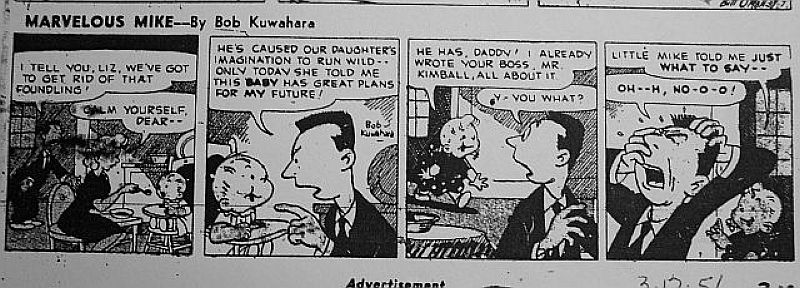
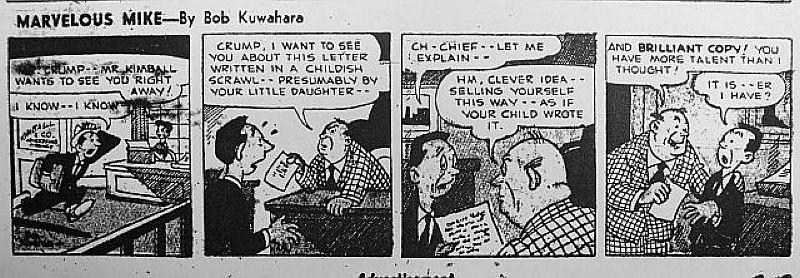
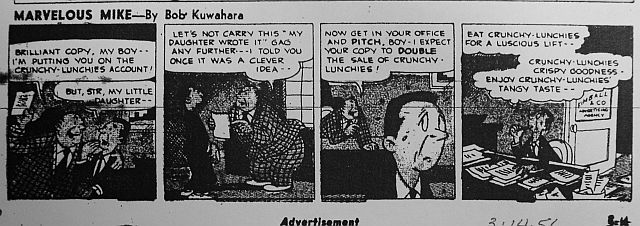
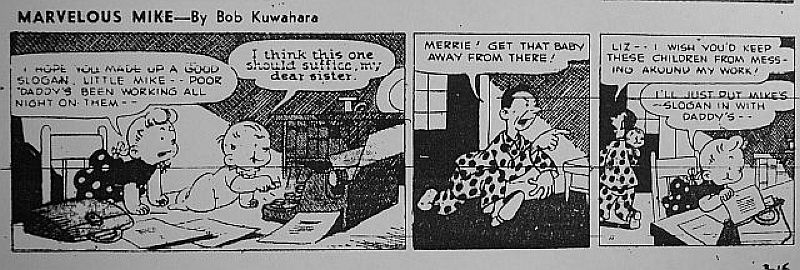
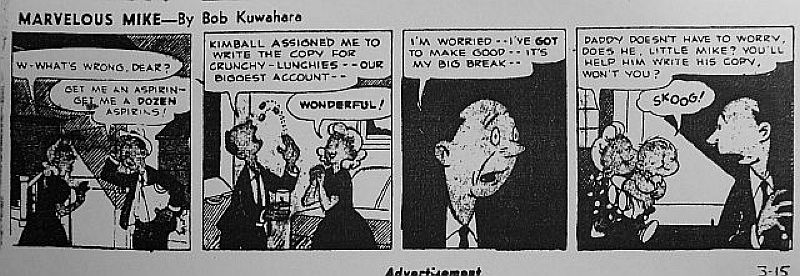

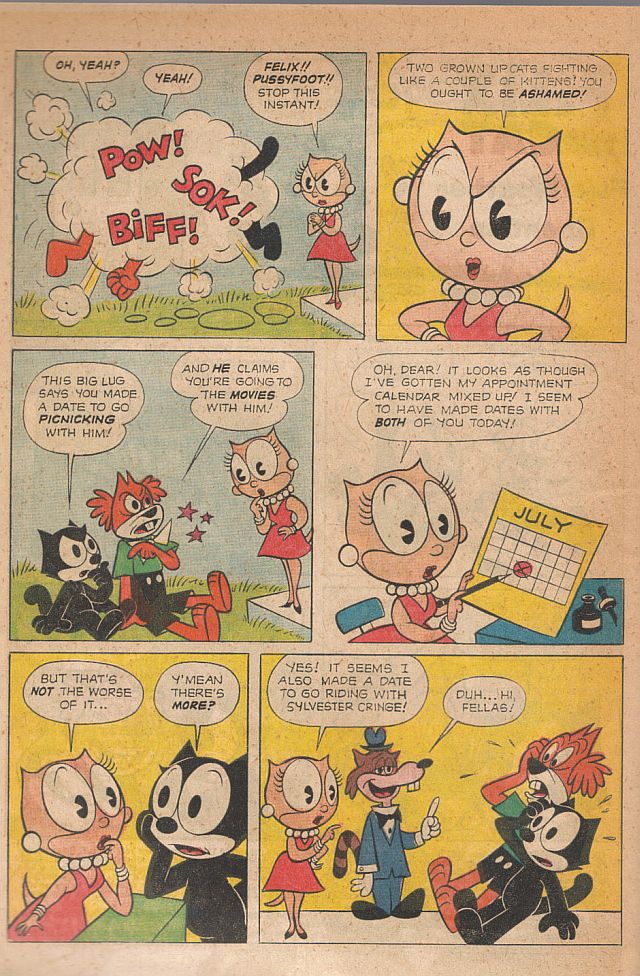

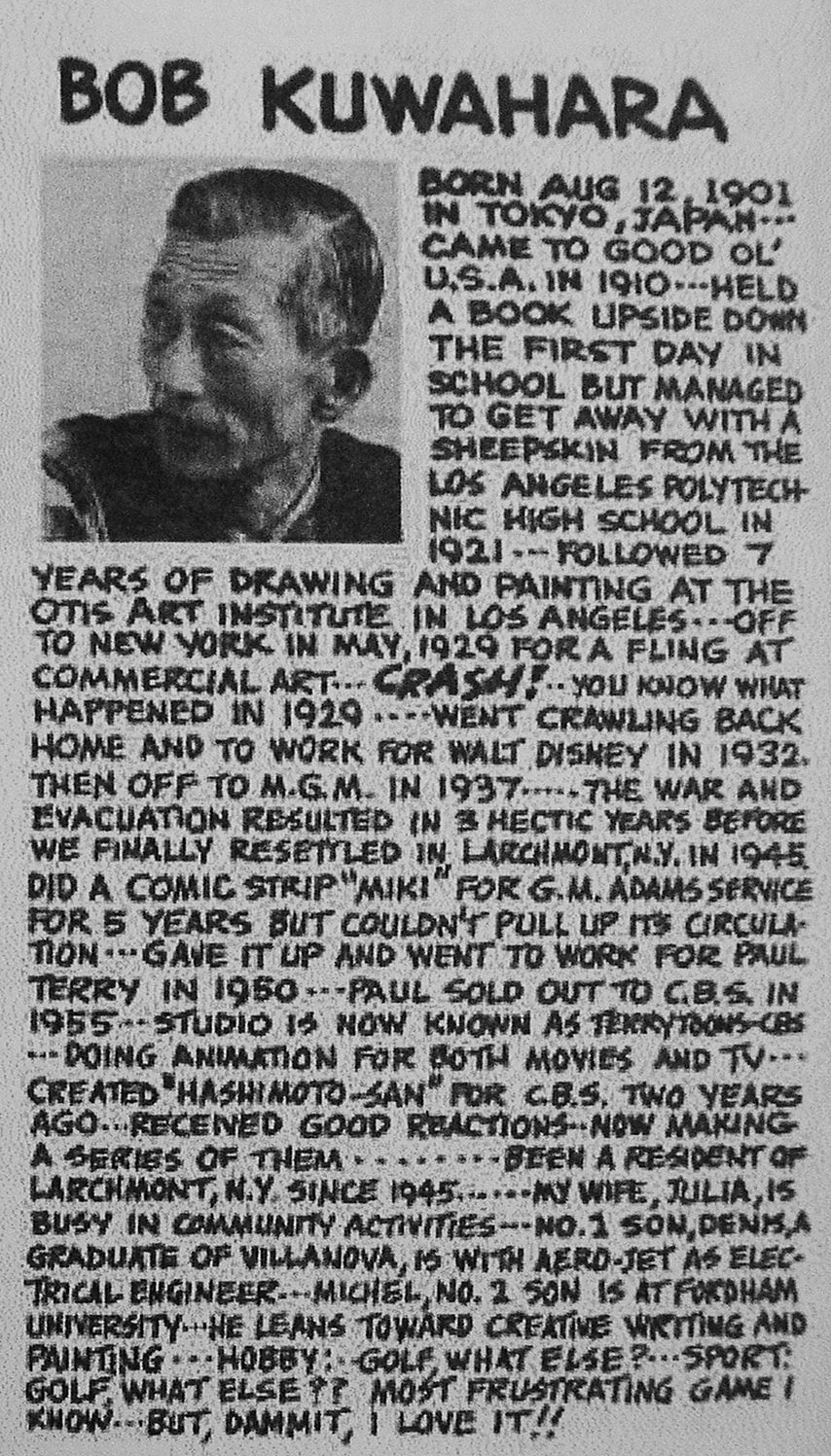



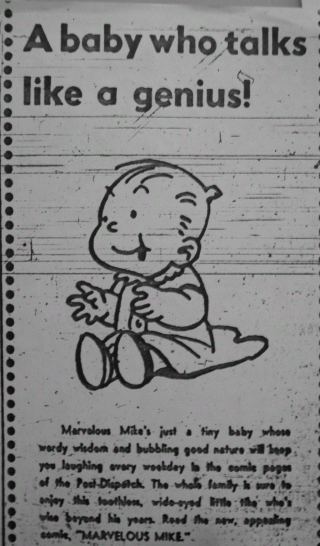
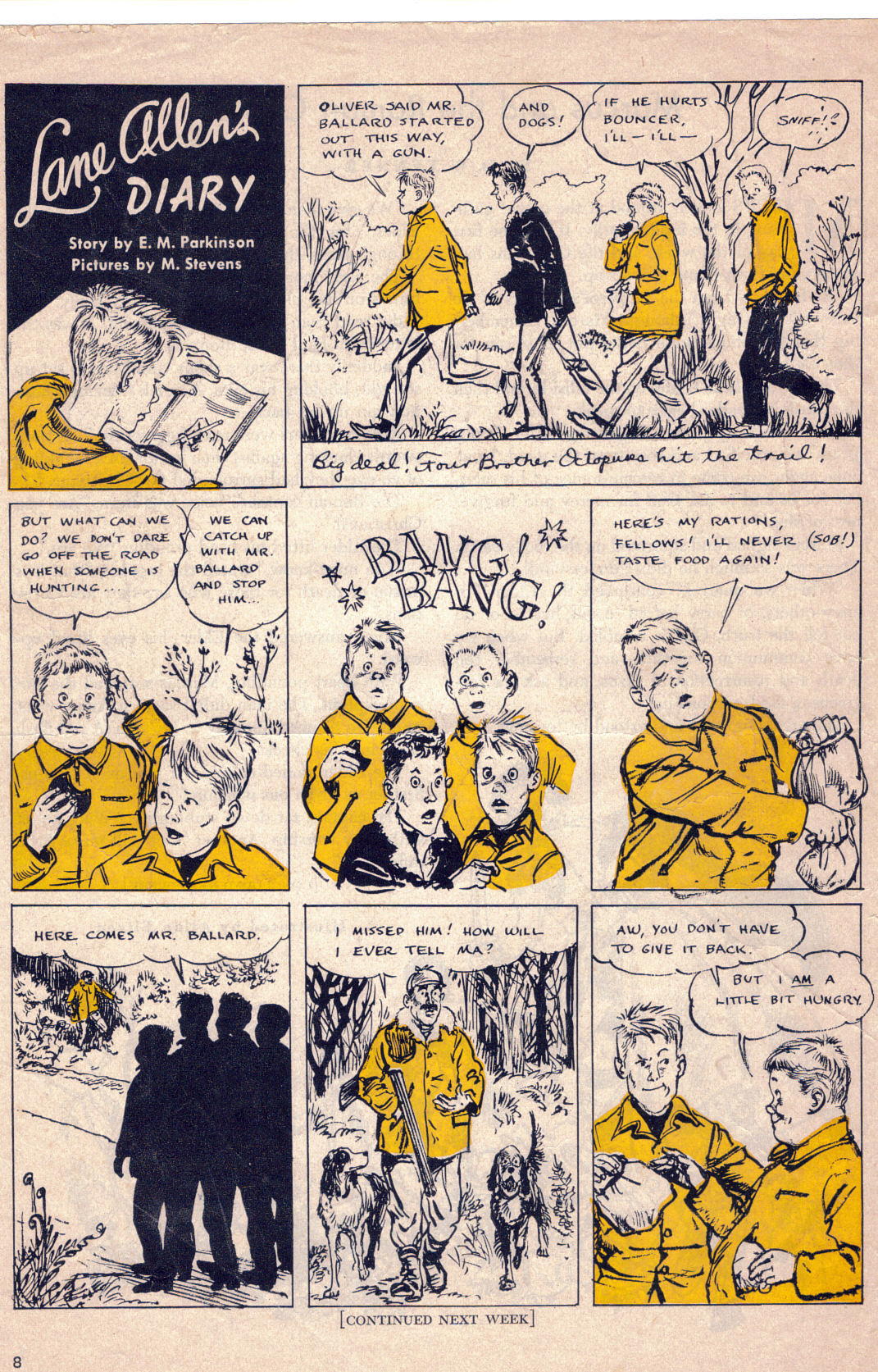

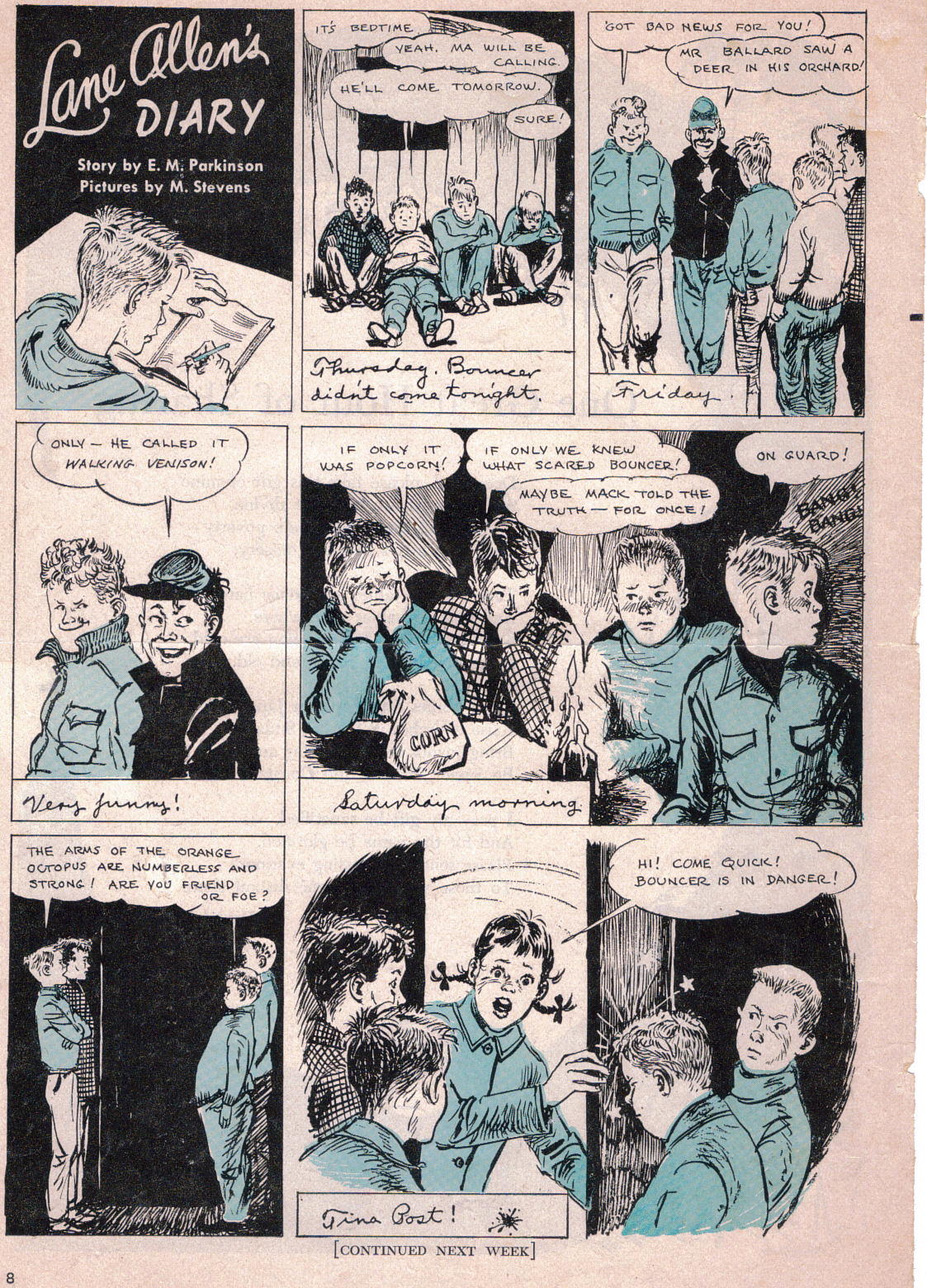
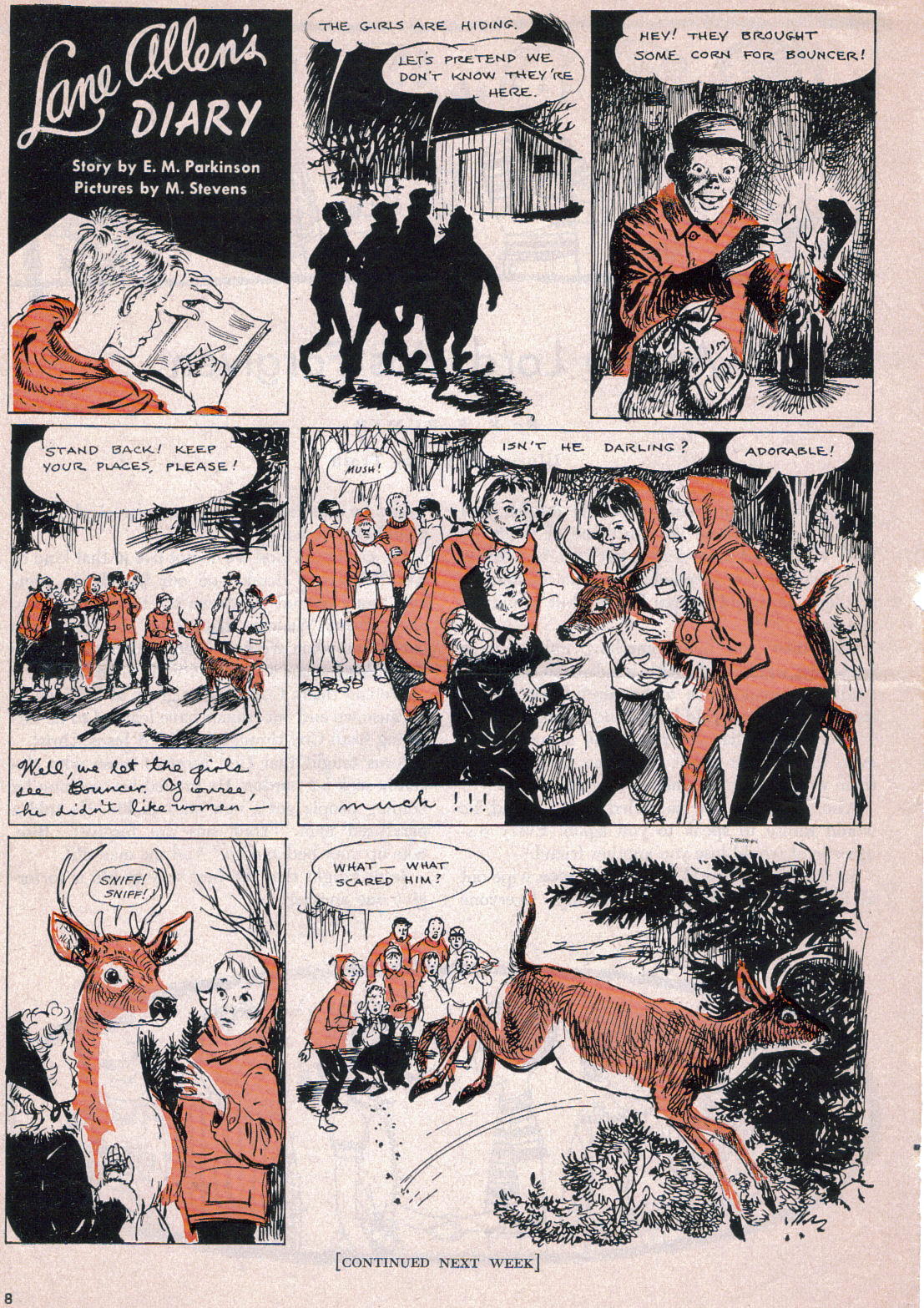
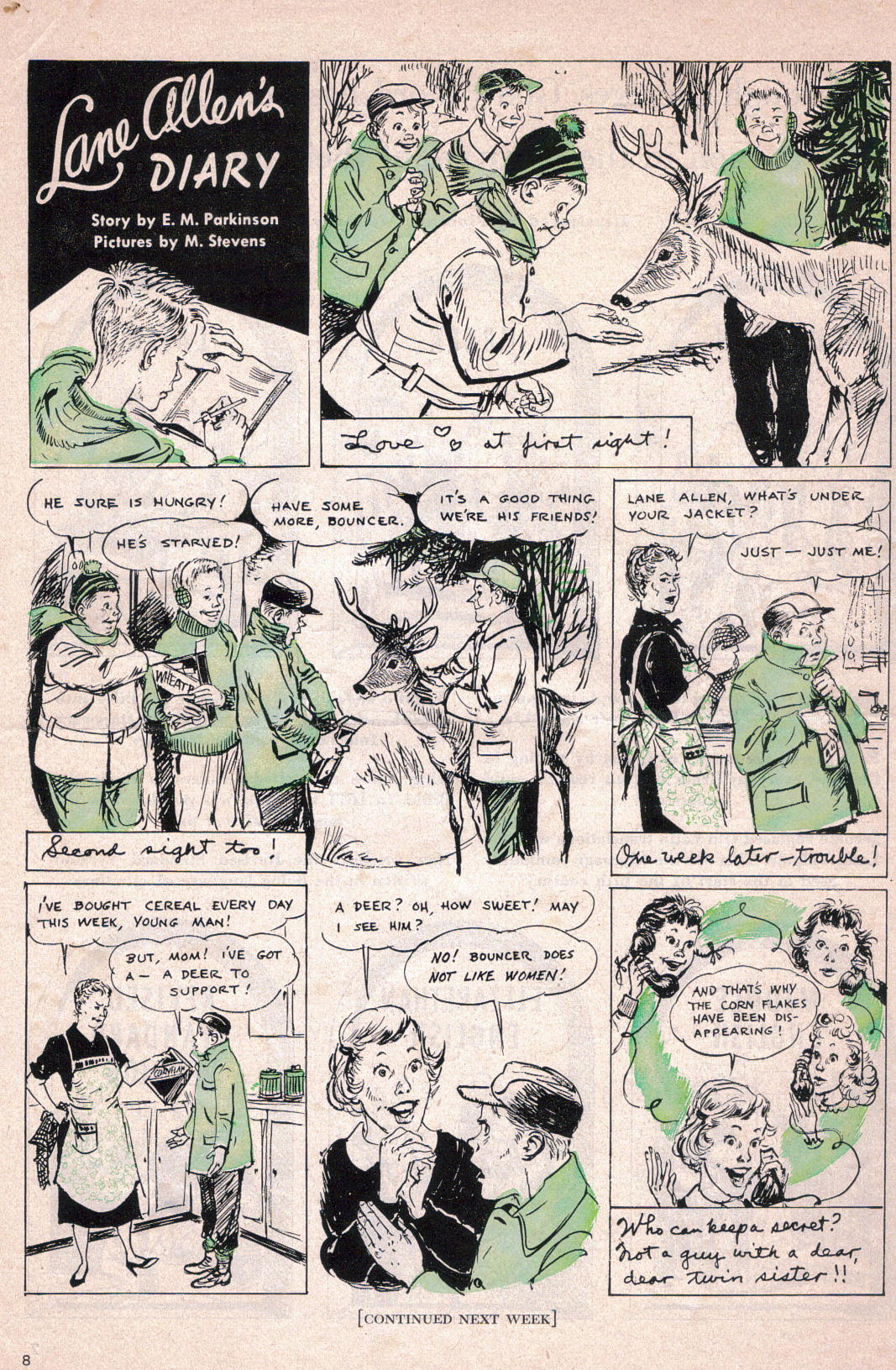
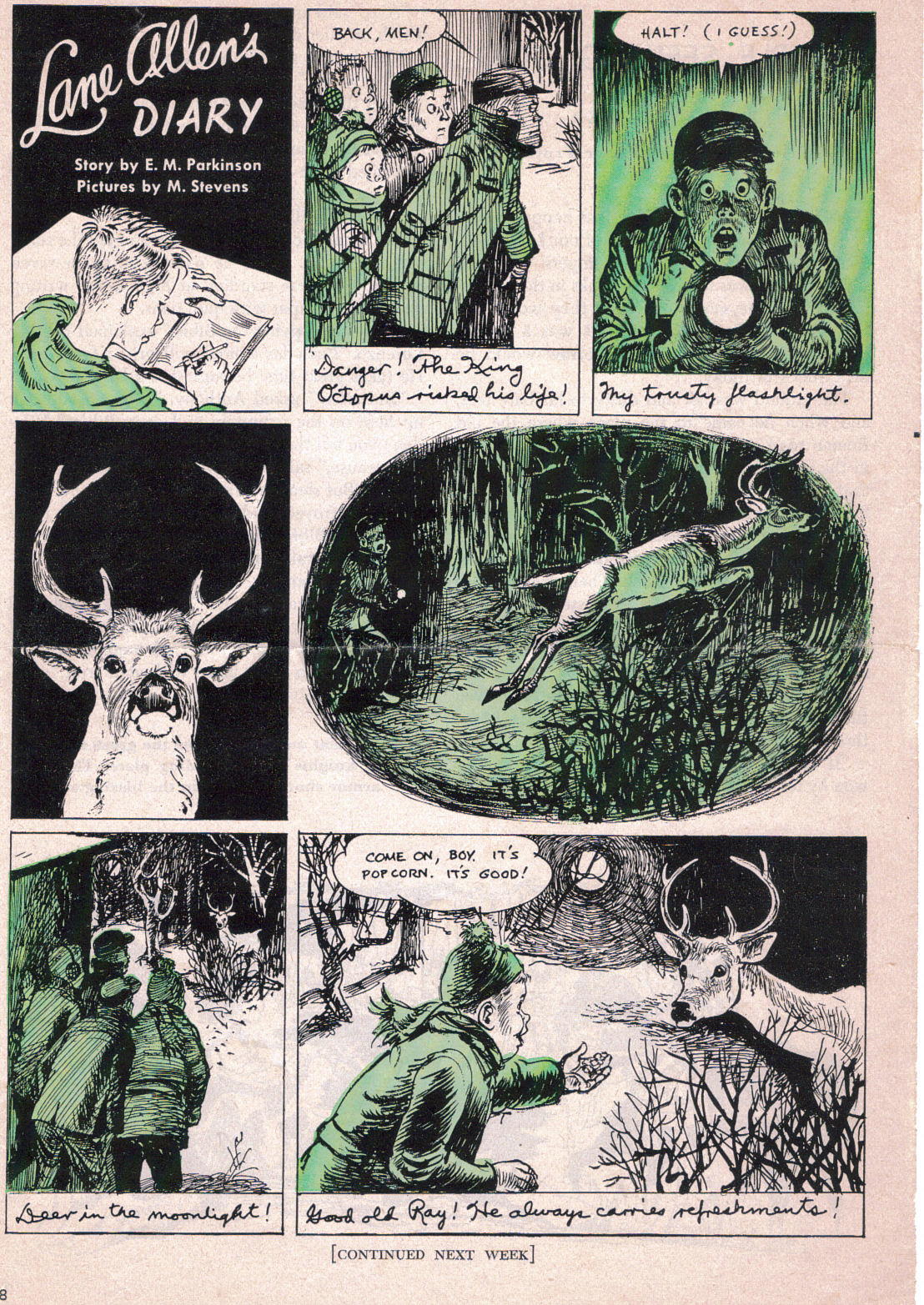
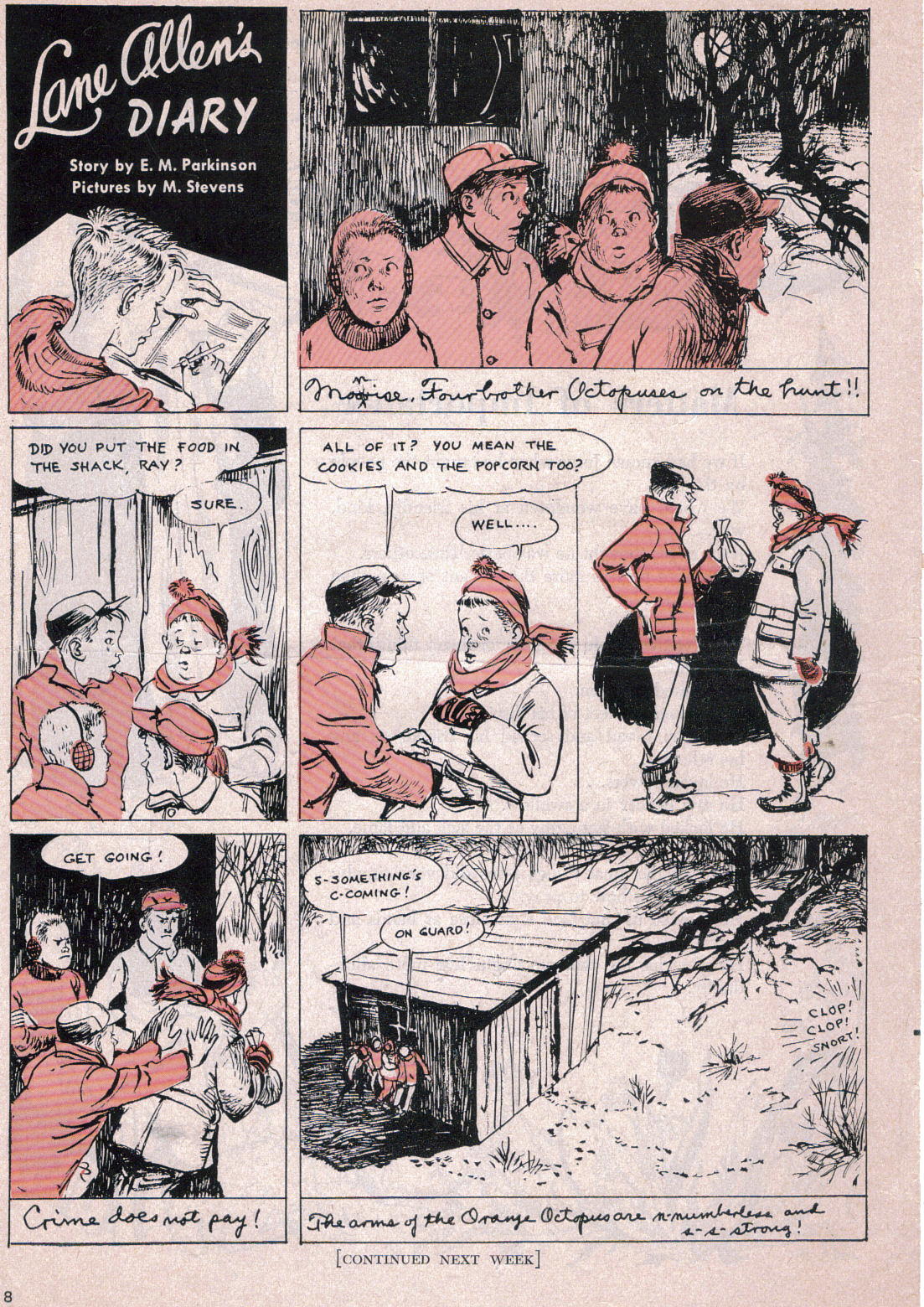






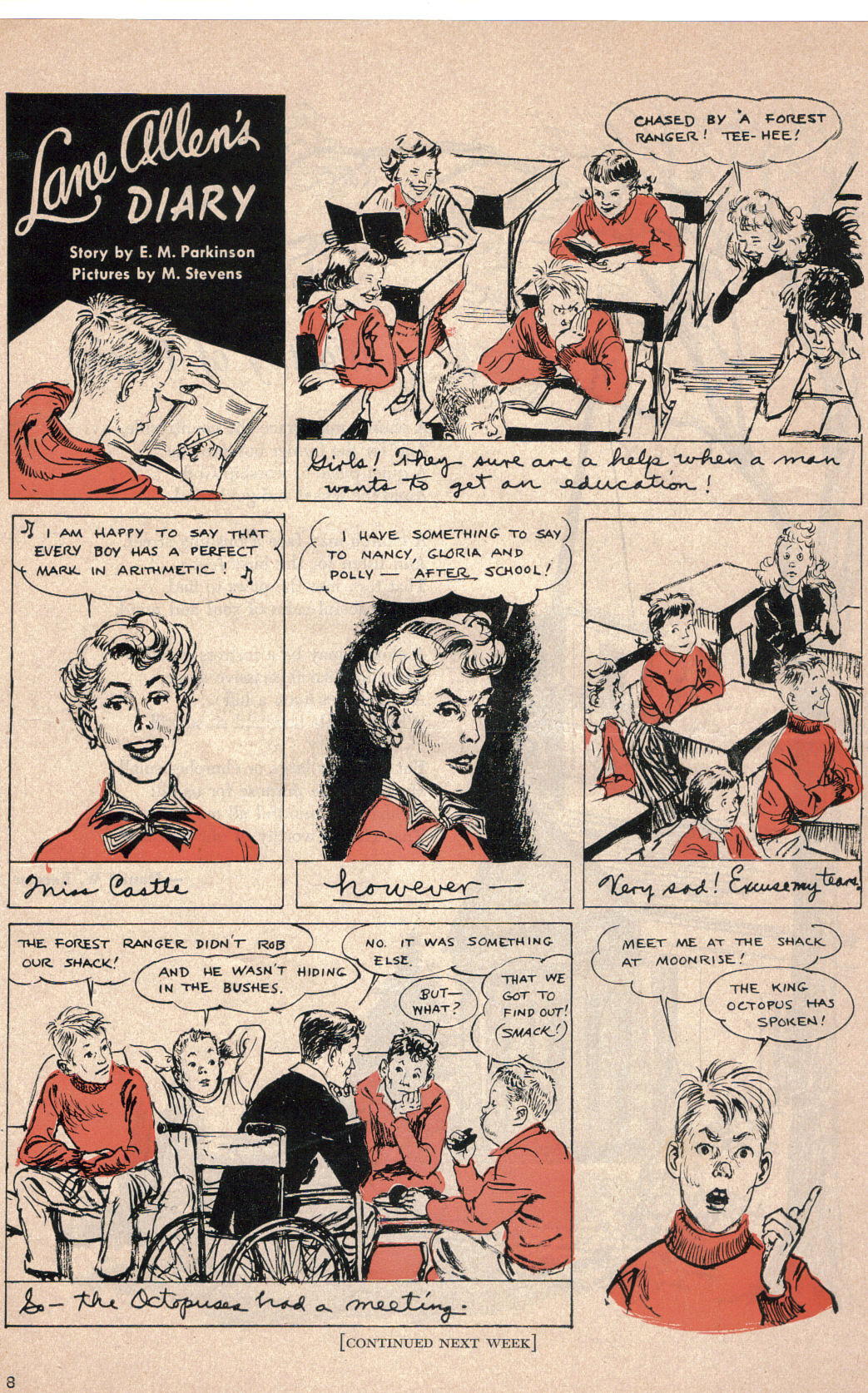







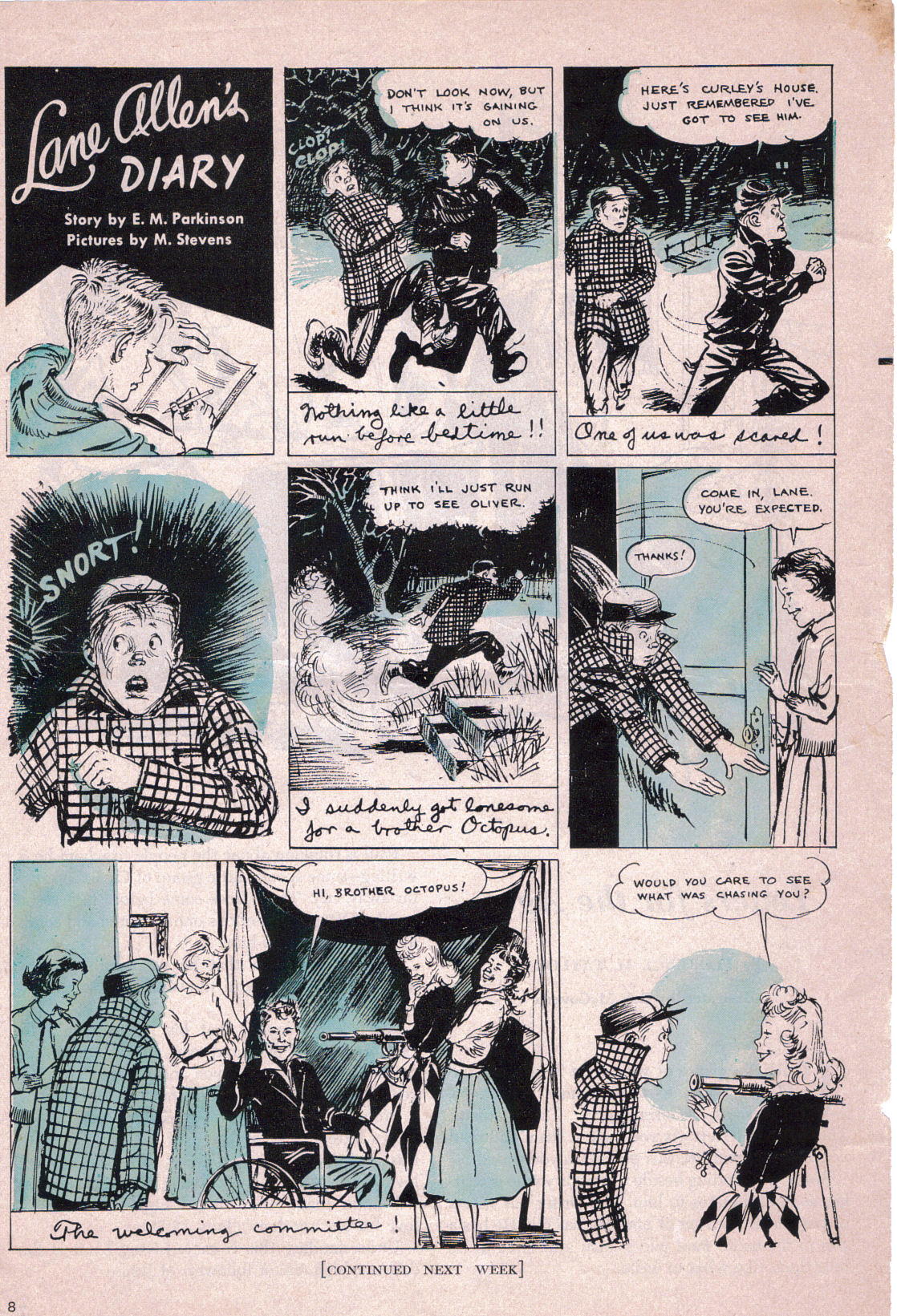






Tracey, Tracey, Tracey
January 29, 2008
Uncategorized
3 Comments
Mark
Through the kindness of my friend Vincent Davis, I received a copy of the new biography of Charles Schulz, Schulz and Peanuts: A Biography by David Michaelis. It took nearly two months for me to finish reading it, and I did not read through all the “Source Notes” at the end of the book. Do you see the drawing of Snoopy above that is signed by Charles Schulz? That inscription is on my copy of the first “Peanuts” book (16th printing), which was autographed in 1972 at the San Diego Comic-Con, when they held it at the El Cortez Hotel. I knew Mr. Schulz was going to attend, so I brought my copy of the book with me. Imagine my joy when I saw him striding quickly across the hotel lobby! I ran after him with book in hand, and breathlessly asked him to sign it for me. At first he looked anything but affable, frowning as if I’d caught him in mid-thought. When he saw the book, however, he brightened up. “You know, there aren’t many of these around!”, he said and started to sign it. Before he could make a mark, I piped up: “Can you draw a Snoopy for me?”, Mr. Schulz looked a bit stormy again, but without a word, drew what you see here in about 10 seconds, then handed me the book and walked away so quickly that I don’t know if he heard me say: “Thanks, Mr. Schulz, I’ve loved your work all my life…..” It’s true, I really do love the “Peanuts” strip, and especially Snoopy. My brother and I loved our family dogs, Sparkle and Schatzi when we were little, and Snoopy took the concept of the intimacy of life with the family dog and enlarged it until Schulz had him fighting The Red Baron upon his imaginary Sopwith Camel Doghouse. I like the early long-nosed Snoopy, which evidently Schulz disliked. This version of Snoopy looked especially funny when he was running around frantically chasing rabbits with wide open mouth, at the insistence of Freida, who thought he was getting soft.
Schulz and Peanuts created a bit of controversy. It paints a picture of Charles Schulz that is a bit more “fleshed-out” (and I do mean flesh) than his family are comfortable with. Monte Schulz, himself a writer, really took exception to the portrayal of his father as a “hands-off” parent, who let his first wife, Joyce, run the house and discipline the kids, while he turned out the strip. Michaelis also shows us a Charles Schulz uncomfortable with displays of affection with his wife and children, insecure about his talent and the merits of his work, and most revealing of all, a human male who had affairs outside of his marriage(s). Only one of these affairs, with Tracey Claudius, seems to have ended up in bed. Schulz certainly changed from the modest barber’s son, art instructor and God-fearing, St. Paul Minneapolis street corner preacher who didn’t drink and always felt left out of everything in school and personal relationships.I found the chapters from #17, “The Call of California” to #28, “Dailies Done” to be the best part of the book. Charles Schulz, who always thought of himself as unattractive and unimportant, found that as the Peanuts empire grew, his influence (and money) made him irresistible to women. The book (in the chapter “Arena”) goes into quite a lot of detail about Tracey and Schulz, and also gives us insight into how his relationship with his first wife, Joyce, was one of the dynamics that informed the 1960s heyday of the strip. Joyce was really Lucy, to simplify. She was the great builder in the family, building two houses and two studios for “Sparky”, including One Snoopy Place in Santa Rosa, and the Redwood Empire Ice Arena, where Schulz was a denizen of the Warm Puppy Cafe.  If you are ever in Santa Rosa, by all means visit the Charles M. Schulz museum and the Ice Rink, I think I love those places more than Disneyland. Eventually, Schulz walked out of his marriage with Joyce, they were in constant conflict over their children, and the affair with Tracey, which Joyce discovered by looking at the Telephone bills. Michaelis draws interesting parallels between happenings in Schulz’s life and the strip, after his marriage to Jeannie in 1973, for instance, Lucy became a much softer character as the inspiration for her feisty attitude, Joyce, lost her influence. Jeannie was much more willing to just let “Sparky” be himself, even indulging his many phobias, such as fear of travel (Jeannie just did a lot of travelling by herself with the children while Sparky stayed in his studio). There were a lot of ironies in Schulz’s life, for all his self-deprecation and low opinion of himself and his work (“I’ll never be Andrew Wyeth”), he was enormously competitive, he felt like Peanuts had to “win” the comics page each day, in comparison with the other strips, or he wasn’t doing his job. He was a very tough negotiator with United Feature Syndicate when he won full rights to the strip, threatening: “…I just want control so you guys can’t ruin it (Peanuts)….I want to own this thing….So either I get my way—exactly what I want—or I’m going to quit.” Wow, that’s no Charlie Brown, that’s Uber-Lucy! What brought this change of heart about? Jim Davis and Garfield! In 1985, Garfield was beginning to be almost as profitable a property to United Feature as Peanuts! Schulz was unhappy with the syndicate’s promotion of the cat at the expense of his dog (Snoopy), so a new era in the business of Peanuts was born. And what a business, at one point in the 1990s, Schulz earned about four thousand dollars a day from his enterprises, not so much the strip, but all the merchandise.
Again, I have a very great love for Peanuts, I even tried to make an animated cartoon with the characters when I was nine. My version of Peanuts looked more like a Hanna-Barbera cartoon, with Snoopy doing a spinning leg exit just like Huck Hound. I had a very warm, friendly feeling about the strip in those days, I liked Charlie Brown, and identified with his longing to be liked. I thought Lucy and Schroeder were especially funny together, and of course, Snoopy, that wonderful dog, a friend forever! It’s really the strip that is the true legacy of Charles Schulz. The animated shows were very well done in the early years (especially the old Tennessee Ernie Ford show openings and the Christmas show) and I liked the children’s voices and Guaraldi jazz scores. I hope, however, that the strip will be kept in print always, and that folks will get to know the characters on the printed page. This may be a forlorn hope, because the experience of living with Snoopy day by day, the feeling that he was a living character from the newspaper that fell in the front yard every morning may be impossible to re-create in book reprints where you see many strips all at once.  I’m glad Charles Schulz lived on Earth, and gave me (and us) such a wonderful reading experience every day. He did it all himself, too, except he couldn’t finish the lettering in the third panel of the last daily he did (Dec. 31st 1999), Paige Braddock, his office assistant, did the lettering for him from a computer font, because Schulz was not feeling good enough. I even love the “Spike and Olaf” era of the strip, when Jeannie’s sanguine influence may have inspired an explosion of new characters. Spike is such a lonely character, living in Needles with only cacti for friends. A lot of Charles Schulz’s feelings of loneliness and isolation are in Spike, and maybe his childhood memories of Needles, California.
Michaelis’s book isn’t perfect by any means, he comes to some rather strange conclusions. On page 563, for instance he states “..only after the master was gone could South Park and Family Guy be recognized as ‘a kind of joyous unleashing of the weird, retentive genius of Charles Schulz.’ ” The quotation within the sentence is from Garry Trudeau. I don’t feel comfortable laying such questionable fare as South Park and Family Guy at Schulz’s doorstep. I think he might have been a little uncomfortable with the taste in some of the jokes in those shows. Schulz’s characters might have had their darker moments, but the strip was always something you wouldn’t hesitate to show to your mother or grandmother (both my grandmas loved Peanuts. They both thought that Charlie Brown’s name was “Peanuts”). I wish Michaelis had done a chapter on Schulz’s working methods, what pens he favored, the paper he used, did he have his children pose for him sometimes (they supplied very little of the humor). The details of Charles Schulz’s family life are the real centerpiece of the book, and the strips that Michaelis picked to illustrate some of the incidents, like the strips that allude to his romance with Tracey, are well-chosen and revelatory, though reproduced a bit too small. If Joyce had been reading Peanuts as closely as the telephone bills, maybe she would have known that Sparky was getting romantic about another woman much earlier!
If Michaelis had written a more Schulz family-approved book, with more details about the creative side of Peanuts, and less detail about his love life, would the book have been any better? I might have liked it better, but the book is very interesting, and it wouldn’t be as compelling a read (especially in the last third) without Tracey, et. al. This book is obviously written with the adult, general reader in mind who wants to read the darker story behind the strip, whether everything in there is the absolute truth or not. I can’t even say I especially recommend this book, I enjoyed reading it, but my copy of the book was a gift, after all. So READ IT and STOP WHINING, YOU STUPID BEAGLES!